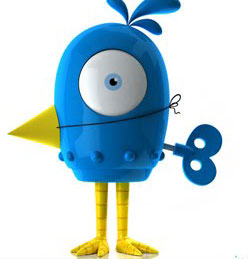Introduction
Q: Please write me a sonnet on the subject of the Forth Bridge.
A: Count me out on this one. I never could write poetry.
This opening epigraph is taken from Alan Turning’s 1950 article Computing Machinery and Intelligence, which he provides as an example of his “imitation game,” or what subsequently became known as the Turing Test. It seems that even in 1950, chatbots (even hypothethical ones) were savvy at eluding any difficult, algorithm-unbound questions such as composing an original piece of poetry. However, nowadays, Twitter bots such as Pentametron and Accidental Haiku do just that: write poetry. Twitter bots can even engage in more complex types of interactions, such as entertaining conversations with other people, commenting on their posts, and answering their questions (see also Hwang, Pearce, & Nanis, 2012).
In this interview, Dr. Leonardo Flores discusses his research and interest in e-poetry and Twitter bots; the design and presentation of this interview in this webtext is meant to reflect these topics. Twitter is a system of short (140 characters or less) messaging, so it frequently draws comparisons to other types of modern messaging and chat mediums, such as texting (Chu, Gianvecchio, Wang, & Jajodia, 2010). As such, the course of the interview has been designed to appear inside of messaging bubbles, which reflect the conversational nature of the interview and draw a parallel to the nature of tweeting.
Readers can follow and enjoy @KairosHotBots on Twitter, which was programmed by Dr. Flores and is an extension of the interview published in Kairos. @KairosHotBots uses templates and a custom-made data set to generate questions and answers, and also recommends additional bots to check out based on the following content categories: activist, humorous, poetic, narrative, artistic, character, and other. The recommended bots have been curated from a list of over 450 bots that Dr. Flores currently follows on Twitter.
 Home
Home Interview
Interview References
References About
About KairosHotBot
KairosHotBot